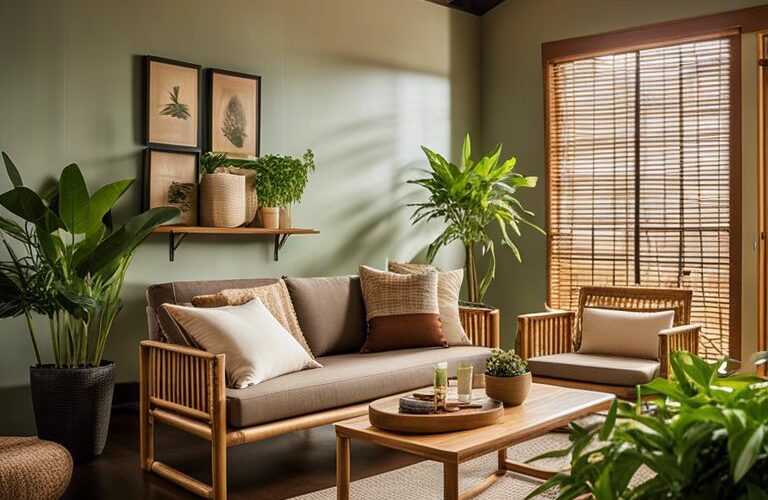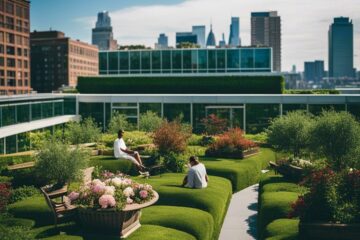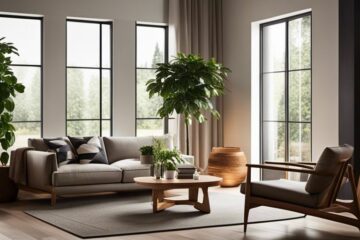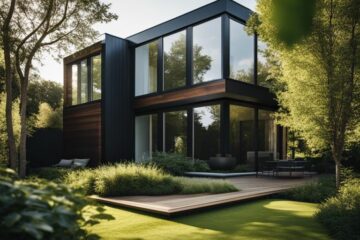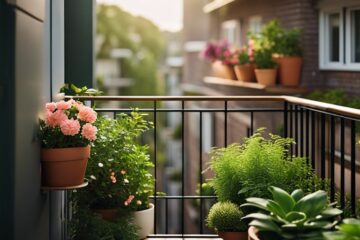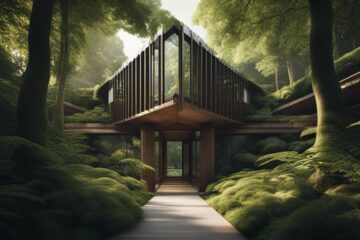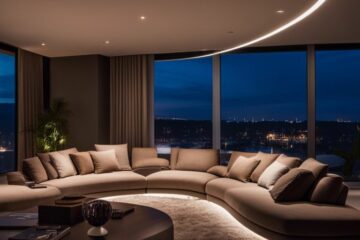Over the years, the importance of sustainable living has become increasingly evident, prompting many to reevaluate their choices when it comes to home furnishings. Bamboo furniture has emerged as a popular choice due to its sustainability, durability, and versatility. As an alternative to traditional wood types, bamboo offers a renewable resource that grows rapidly and requires minimal water and pesticides to thrive. Not only is bamboo furniture environmentally friendly, but it is also known for its elegance, strength, and lightweight nature. By opting for bamboo furniture, homeowners can make a significant impact by contributing to a more ecologically responsible lifestyle.
Table of Contents
Key Takeaways:
- Durability: Bamboo furniture is known for its strength and durability, making it a long-lasting choice for sustainable homes.
- Environmentally Friendly: Bamboo is a fast-growing renewable resource that can be harvested without causing harm to the environment, making it an eco-friendly option for furniture.
- Biodegradable: Bamboo furniture is biodegradable, meaning it can easily break down at the end of its life cycle without harming the environment.
- Stylish Design: Bamboo furniture offers a sleek and stylish design that can enhance the aesthetic of any room in a sustainable home.
- Cost-Effective: While bamboo furniture may have a slightly higher upfront cost, its durability and longevity make it a cost-effective choice in the long run as it requires minimal maintenance and replacements.
Understanding Bamboo Furniture
Clearly, choosing bamboo furniture for your sustainable home is a smart decision. Bamboo is a fast-growing, renewable resource that is both durable and eco-friendly. Understanding the growth, harvesting, and characteristics of bamboo furniture can further enlighten you on why it’s an excellent choice for your living space.
The Growth and Harvesting of Bamboo
With a growth rate of up to 3 feet per day, bamboo is one of the fastest-growing plants on the planet. This rapid growth makes it a highly sustainable resource as it can be harvested in 3-5 years, unlike hardwood trees that can take decades to mature. Bamboo also doesn’t require replanting after harvest, as it regenerates from its roots, further reducing its environmental impact.
Bamboo is typically harvested by hand, ensuring minimal disturbance to the surrounding environment. The harvesting process is done selectively, allowing the plant to continue growing and contributing to carbon sequestration. Additionally, bamboo plantations play a crucial role in providing habitat for wildlife and promoting biodiversity, making it a truly sustainable choice for furniture production.
Characteristics of Bamboo Furniture
The characteristics of bamboo furniture make it a top choice for sustainable home decor. Bamboo is incredibly strong and durable, making it suitable for everyday use. Its natural resistance to moisture, insects, and warping sets it apart from other wood materials. Bamboo furniture is also lightweight, making it easy to move around and rearrange in your living space.
To top it off, bamboo furniture has a beautiful, sleek appearance that can complement a variety of interior design styles. Its natural grain patterns and light color give it a modern and timeless appeal. Whether you’re looking for a sturdy dining table, stylish chairs, or functional shelving units, bamboo furniture offers a wide range of options to enhance your sustainable home.
Environmental Benefits
Bamboo’s Rapid Renewability
For those looking to furnish their homes sustainably, bamboo furniture offers a multitude of environmental benefits. Assuming a crucial role in sustainable living practices, bamboo stands out for its rapid renewability. Unlike hardwood trees that can take decades to mature, bamboo is technically a grass that can be harvested in just 3-5 years. This quick turnaround time makes bamboo an incredibly sustainable material for furniture production.
For environmentally conscious consumers, choosing bamboo furniture means opting for a material that can be replenished at a much faster rate than traditional wood sources. By selecting bamboo products, individuals can help reduce the demand for slower-growing timber, contributing to the preservation of our forests and natural habitats.
Reduction in Deforestation
Bamboo’s ability to thrive in diverse climates makes it a versatile and eco-friendly resource for furniture production. Bamboos are known for their rapid growth rate, with some species capable of growing up to 35 inches in a single day. This prolific growth means that bamboo forests can be replenished and harvested sustainably without causing long-term damage to the environment.
Any reduction in deforestation is a win for our planet. By utilizing bamboo as a furniture material, we can help preserve valuable forests, protect biodiversity, and combat climate change by reducing the need to clear vast areas of trees for wood production.
Economic and Social Advantages
Cost-Effectiveness of Bamboo Furniture
Economic considerations play a significant role in choosing sustainable materials for home furnishings. Bamboo furniture offers a cost-effective alternative to traditional hardwoods due to its rapid growth rate and easy cultivation. This fast regrowth and abundant supply of bamboo translate into lower production costs, making bamboo furniture more affordable for consumers.
Moreover, the durability of bamboo rivals that of many hardwoods, ensuring that investing in bamboo furniture is a long-term solution that minimizes the need for frequent replacements. By opting for bamboo furniture, consumers can save money in the long run while still enjoying high-quality and sustainable pieces for their homes.
Support for Local Communities and Craftsmanship
Local communities that rely on bamboo production benefit from the demand for bamboo furniture, creating economic opportunities and supporting sustainable livelihoods. By choosing bamboo furniture, consumers contribute to the empowerment of these communities, helping to sustain their traditional crafts and industries.
The production of bamboo furniture often involves skilled craftsmanship passed down through generations. By supporting these artisans, consumers not only bring unique and handcrafted pieces into their homes but also help preserve cultural heritage and traditional skills for future generations.
The economic and social advantages of choosing bamboo furniture extend beyond individual homes, creating ripple effects that benefit both local communities and the environment. By making informed and sustainable choices in home furnishing, consumers can contribute to a more ethical and sustainable future.
Aesthetic and Practical Considerations
Once again, choosing bamboo furniture for your sustainable home not only benefits the environment but also offers a range of aesthetic and practical advantages. Bamboo furniture is not only eco-friendly but also adds a touch of natural elegance to any living space. When considering bamboo furniture for your home, it’s vital to take into account both its versatile design options and its durability.
Versatility in Design and Style
Design: Bamboo furniture comes in a variety of design styles, ranging from modern and minimalist to classic and rustic. Whether you prefer sleek lines and contemporary finishes or organic shapes and earthy textures, bamboo furniture offers a versatile range of options to complement any decor style. Its natural color and grain variations add warmth and character to your home, creating a unique and stylish aesthetic.
Practical: In addition to its design versatility, bamboo furniture is also lightweight and easy to move around, making it ideal for small spaces or for rearranging your furniture layout. Its natural flexibility allows for intricate designs and can be shaped into different forms, providing endless creative possibilities for furniture pieces in your home.
Durability and Maintenance of Bamboo Furniture
Practical: Bamboo furniture is known for its exceptional durability, making it a long-lasting investment for your home. When properly maintained, bamboo furniture can withstand daily use and remain in excellent condition for years to come. To maintain its beauty and extend its lifespan, regular dusting and occasional polishing with a bamboo-friendly cleaner are all that is needed.
Plus: Bamboo’s natural resistance to moisture and insects makes it an ideal choice for furniture pieces that are exposed to varying environmental conditions. This sustainable material is not only stylish but also practical, offering a low-maintenance option for sustainable living.
Conclusion
With these considerations in mind, it is clear that choosing bamboo furniture for a sustainable home brings numerous benefits. Not only is bamboo an eco-friendly and renewable resource, but it also offers durability, versatility, and aesthetic appeal. By opting for bamboo furniture, homeowners can contribute to environmental conservation efforts while enjoying stylish and long-lasting pieces that enhance the overall look and feel of their living spaces.
FAQ
Q: Why should I choose bamboo furniture for a sustainable home?
A: Bamboo is a fast-growing renewable resource that is eco-friendly and helps reduce deforestation. Choosing bamboo furniture promotes sustainability and reduces environmental impact.
Q: How durable is bamboo furniture compared to other types of wood?
A: Bamboo furniture is known for its durability and strength. It is harder than most traditional hardwoods, making it a reliable choice for long-lasting furniture pieces.
Q: Is bamboo furniture easy to maintain?
A: Yes, bamboo furniture is relatively low-maintenance. Regular dusting and occasional polishing with a natural wood cleaner can help keep it looking beautiful for years to come.
Q: Are there different styles and designs available in bamboo furniture?
A: Yes, bamboo furniture comes in a variety of styles and designs to suit different tastes. From modern and sleek to rustic and traditional, there are plenty of options to choose from.
Q: Is bamboo furniture affordable compared to other types of furniture?
A: Bamboo furniture is often more affordable than other types of wood furniture, making it a budget-friendly option for those looking to furnish their homes sustainably.

Our contributing author is a passionate advocate for eco-friendly living and sustainability. With a background in eco-life, they are dedicated to inspiring and empowering individuals to adopt environmentally conscious lifestyles. Through insightful articles, they share practical tips, innovative solutions, and thought-provoking perspectives to promote a greener, more sustainable world. Join them on the journey towards eco-smart living and discover how small choices can make a big impact. 🌱

